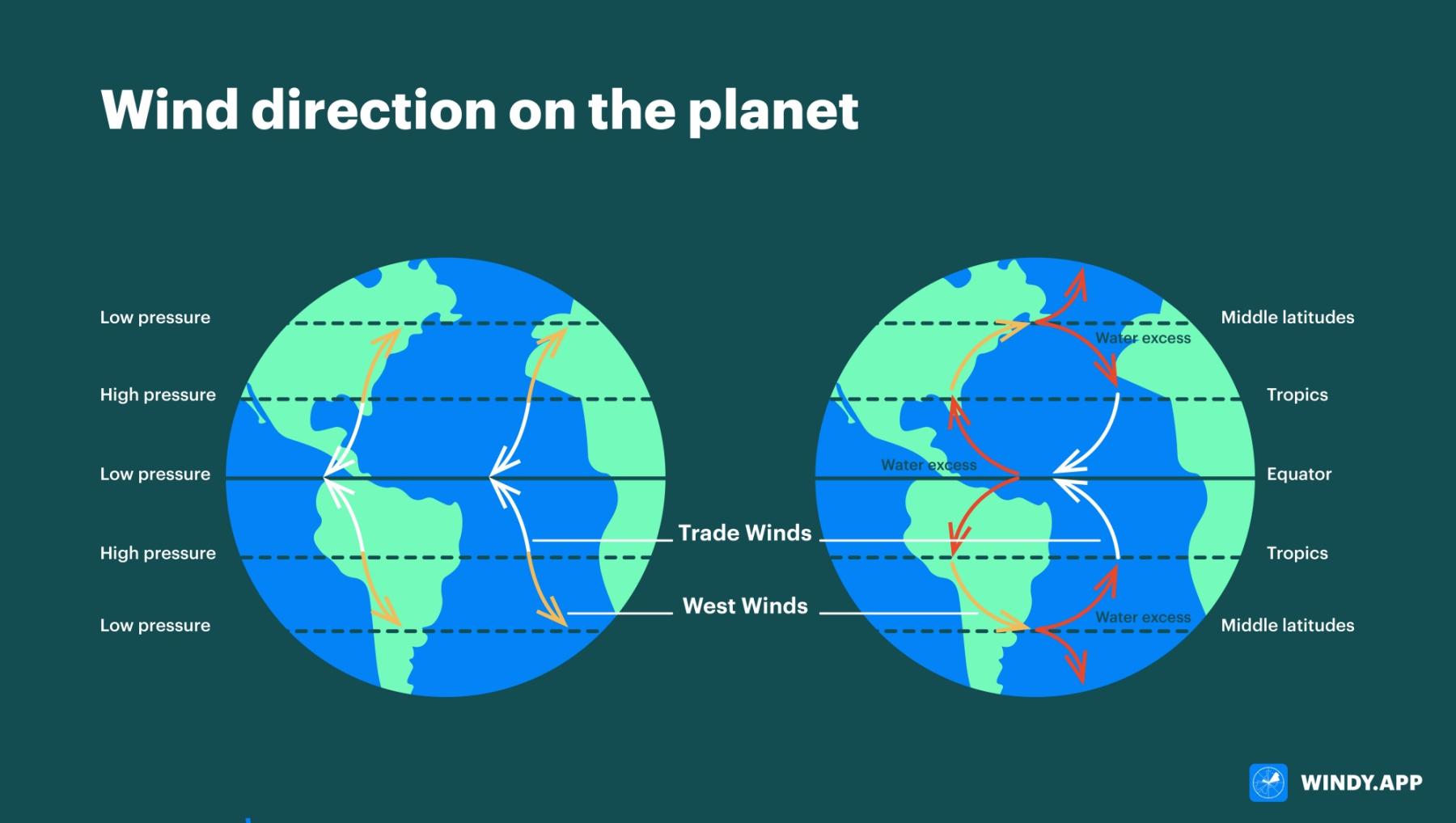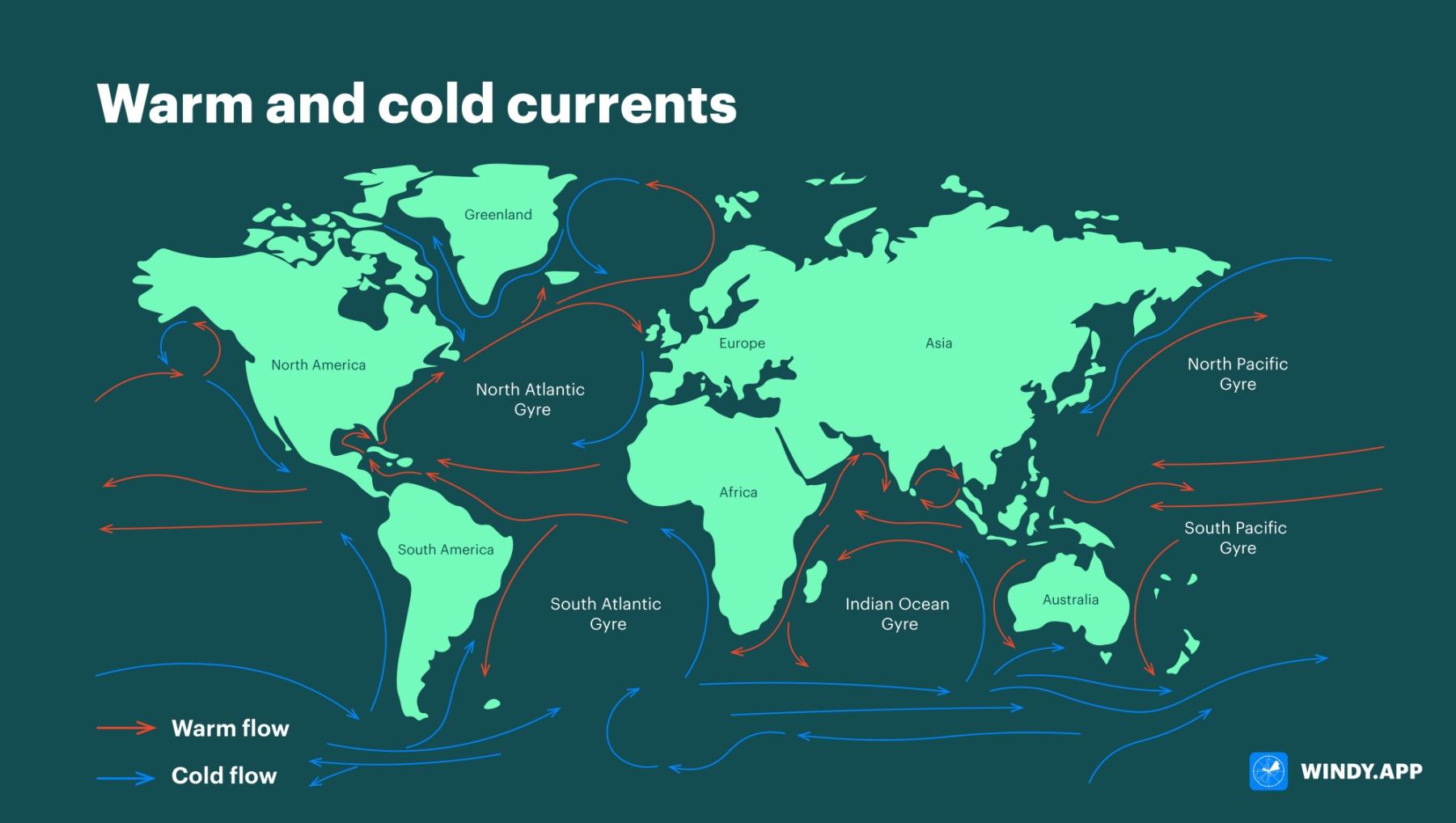
How ocean currents work
An ocean current is the movement of ocean water from area A to area B. In this new lesson of the Windy.app Meteorological Textbook (WMT) and newsletter for better weather forecasting you will learn more about what ocean current is and how it works.
What causes that movement?
First of all, the wind. When the wind blows above the surface of the ocean, it moves the upper layers of water. The movement is transmitted to deeper layers and from them to even deeper waters.
This is how the wind determines the movement of a fairly thick layer of seawater — mostly up to 400 meters deep. So, to understand where exactly the main ocean currents travel, we need to answer the following question:
How does the wind blow?
It's simple — it blows from a high-pressure area to a low-pressure area. There's low pressure around the equator and high pressure above the tropics.
That's why permanent winds — trade winds — blow from the tropics to the equator all year round. In addition, from the same tropics, where pressure is high, west winds blow — they are directed to so-called middle latitudes (where pressure is low).

Wind direction on the planet. Illustration: Valerya Milovanova / Windy.app
We said in one of the first letters that the Earth's rotation, or more precisely the Coriolis force caused by it, deflects the trajectory of winds in the atmosphere: to the right in the Northern Hemisphere, to the left — in the Southern.
Therefore, trade winds and west winds in the Northern Hemisphere twist a little clockwise, while in the Southern Hemisphere — counterclockwise.
You can see that in the first diagram, and what's in the second one?
Northern and Southern Hemisphere trade winds blow towards the equator, thus directing sea currents there. There's more and more water coming in, so there's an excess of it.
This excess is being "displaced" again towards the tropics: one part of it goes to the Southern Hemisphere and the other — to the Northern Hemisphere. In the tropics, this water is "picked up" by the west wind and moved to moderate latitudes.
An excess of water is formed there too, and part of it is again pushed towards the tropics, where trade winds are waiting.
As a result, the whole system of ocean currents looks like whirlpools moving in a clockwise direction in the Northern Hemisphere and counterclockwise — in the Southern.

Cold and warm currents. Illustration: Valerya Milovanova / Windy.app
What do we see on the map?
The red arrows show the direction of warm currents. A warm current is like a warm river flowing under the influence of wind surrounded by colder water. These warm rivers bring warmer water to areas where the water is colder, which is why they are called 'warm currents'. That's why on the map warm currents are most often directed from lower latitudes (where the water is warmer) to higher latitudes (where the water warms up less).
Cold currents are shown with blue arrows. They bring cold water from higher latitudes, where the ocean is colder, to lower ones, where the water is warmer. As a result, the water in the ocean is mixed, and heat is redistributed.
The redistribution of heat is very important for the climate. Europe, for example, has a fairly mild and warm climate thanks to the warm North Atlantic Current that travels near its shores, which is an extension of the Gulf Stream coming from the tropics.
So, today we found out that:
The wind moves surface waters and creates currents. If it moves warmer water into an area with colder water, a warm current is formed, if it's the other way around — a cold current.
But the wind can only move the upper layers of water, i.e. it forms only surface currents. We will talk about what happens at big depths, i.e. about underwater currents, we wrote here.
Text: Windy.app team
Illustrations: Valerya Milovanova, an illustrator with a degree from the British Higher School of Art an Design (BHSAD) of Universal University
Cover photo: Unsplash
You will also find useful
Why is there snow on the top of the mountains
Latest News
Professional Weather App
Get a detailed online 10 day weather forecast, live worldwide wind map and local weather reports from the most accurate weather models.
Compare spot conditions, ask locals in the app chat, discover meteo lessons, and share your experience in our Windy.app Community.
Be sure with Windy.app.



